Input interpretation

vinyl bromide
Chemical names and formulas
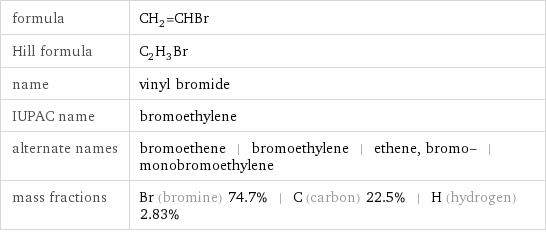
formula | CH_2=CHBr Hill formula | C_2H_3Br name | vinyl bromide IUPAC name | bromoethylene alternate names | bromoethene | bromoethylene | ethene, bromo- | monobromoethylene mass fractions | Br (bromine) 74.7% | C (carbon) 22.5% | H (hydrogen) 2.83%
Lewis structure
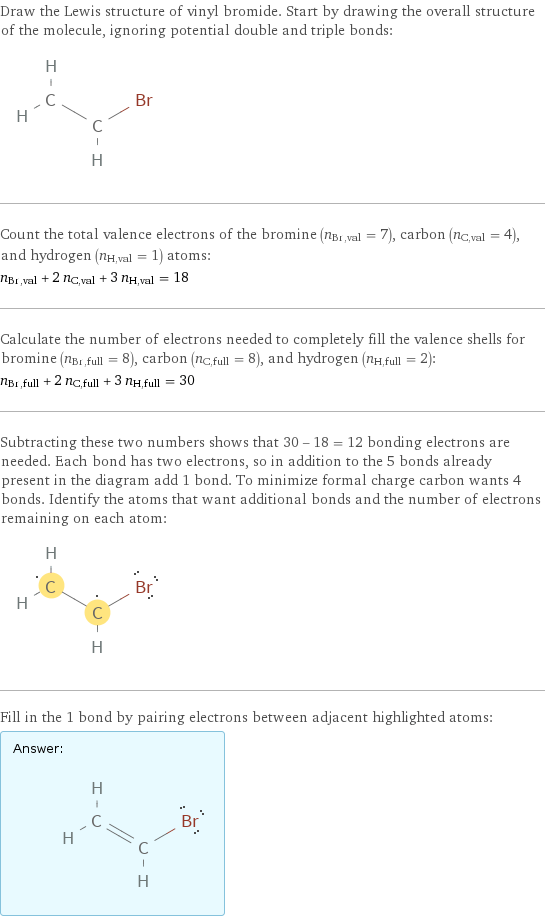
Draw the Lewis structure of vinyl bromide. Start by drawing the overall structure of the molecule, ignoring potential double and triple bonds: Count the total valence electrons of the bromine (n_Br, val = 7), carbon (n_C, val = 4), and hydrogen (n_H, val = 1) atoms: n_Br, val + 2 n_C, val + 3 n_H, val = 18 Calculate the number of electrons needed to completely fill the valence shells for bromine (n_Br, full = 8), carbon (n_C, full = 8), and hydrogen (n_H, full = 2): n_Br, full + 2 n_C, full + 3 n_H, full = 30 Subtracting these two numbers shows that 30 - 18 = 12 bonding electrons are needed. Each bond has two electrons, so in addition to the 5 bonds already present in the diagram add 1 bond. To minimize formal charge carbon wants 4 bonds. Identify the atoms that want additional bonds and the number of electrons remaining on each atom: Fill in the 1 bond by pairing electrons between adjacent highlighted atoms: Answer: | |
3D structure

3D structure
Basic properties
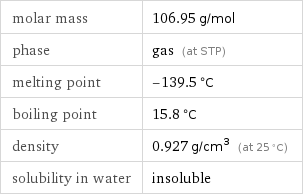
molar mass | 106.95 g/mol phase | gas (at STP) melting point | -139.5 °C boiling point | 15.8 °C density | 0.927 g/cm^3 (at 25 °C) solubility in water | insoluble
Units

Gas properties (at STP)
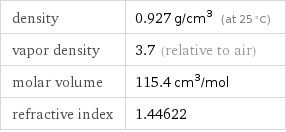
density | 0.927 g/cm^3 (at 25 °C) vapor density | 3.7 (relative to air) molar volume | 115.4 cm^3/mol refractive index | 1.44622
Units

Thermodynamic properties
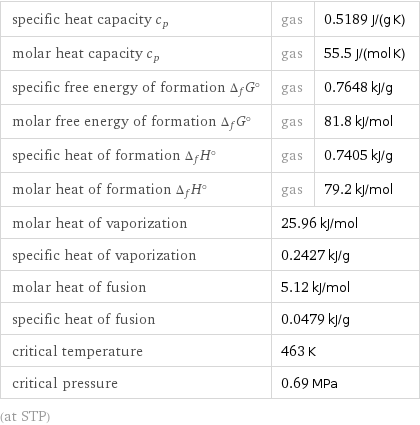
specific heat capacity c_p | gas | 0.5189 J/(g K) molar heat capacity c_p | gas | 55.5 J/(mol K) specific free energy of formation Δ_fG° | gas | 0.7648 kJ/g molar free energy of formation Δ_fG° | gas | 81.8 kJ/mol specific heat of formation Δ_fH° | gas | 0.7405 kJ/g molar heat of formation Δ_fH° | gas | 79.2 kJ/mol molar heat of vaporization | 25.96 kJ/mol | specific heat of vaporization | 0.2427 kJ/g | molar heat of fusion | 5.12 kJ/mol | specific heat of fusion | 0.0479 kJ/g | critical temperature | 463 K | critical pressure | 0.69 MPa | (at STP)
Chemical identifiers
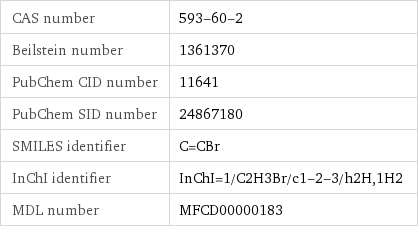
CAS number | 593-60-2 Beilstein number | 1361370 PubChem CID number | 11641 PubChem SID number | 24867180 SMILES identifier | C=CBr InChI identifier | InChI=1/C2H3Br/c1-2-3/h2H, 1H2 MDL number | MFCD00000183
NFPA label

NFPA label
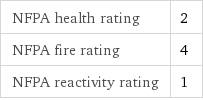
NFPA health rating | 2 NFPA fire rating | 4 NFPA reactivity rating | 1
Safety properties
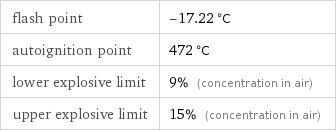
flash point | -17.22 °C autoignition point | 472 °C lower explosive limit | 9% (concentration in air) upper explosive limit | 15% (concentration in air)

DOT hazard class | 2.1 DOT numbers | 1085
Toxicity properties

threshold limit value | 0.5 ppmv

long-term exposure limit | 20 mg/m^3 (over 8 hours) RTECS classes | tumorigen | mutagen